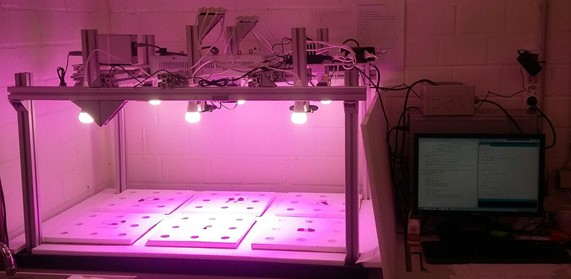Scientists from Skoltech have trained neural networks to evaluate and predict the plant growth pattern taking into account the main influencing factors and propose the optimal ratio between the nutrient requirements and other growth-driving parameters. The results of the study were published in the IEEE journal Transactions on Instrumentations and Measurements.
 Over the past few years, multiple attempts have been made to use artificial intelligence (AI) in nearly all spheres of life. It has proven useful, helping people to make the right decisions and achieve the goal. Using AI to grow plants in artificial environments is no exception. Neural networks come in a broad variety of architectures, including their most prominent type, recurrent neural networks (RNN), that help efficiently process directional sequences of data, such as text, speech or time series, the latter being the most instrumental in describing plant growth over time.
Over the past few years, multiple attempts have been made to use artificial intelligence (AI) in nearly all spheres of life. It has proven useful, helping people to make the right decisions and achieve the goal. Using AI to grow plants in artificial environments is no exception. Neural networks come in a broad variety of architectures, including their most prominent type, recurrent neural networks (RNN), that help efficiently process directional sequences of data, such as text, speech or time series, the latter being the most instrumental in describing plant growth over time.
In their study, the Skoltech scientists showed how RNN can be used in combination with computer vision algorithms to handle the plant growth prediction task in its entirety, while keeping an eye on the current status and main parameters of the plant growing system. The task was addressed using the data obtained in the study preformed in collaboration with the German Aerospace Center (DLR), where the German scientists looked at additional stimulation for plant growth in artificial systems similar to those used on the International Space Station. The joint experiment yielded valuable results that helped find the optimal ratio of nutrients ensuring the best growth pattern under the existing constraints.
The scientists segmented and determined the total foliage area using computer vision algorithms and predicted plant growth using the RNN of various architectures that coped efficiently with the task. They also proposed an embedded energy-efficient system for calculating and predicting the growth pattern in order to make real-life demo runs and tests of the dedicated software.
The system is based on embedded system, a popular single-board prototyping computer with an external Intel Movidius graphics card. The device uses a compact and powerful Myriad 2 graphics processor operating at 150 Gflops with a power of only 1 W, which is comparable to the supercomputers of the mid-1990s. A perfect solution for neural networks, these graphics chips will likely become the core of embedded AI-based systems in the future.
“The findings obtained in this study will help create portable systems for continuous monitoring and prediction of plant growth in artificial growing systems, which will ultimately be of invaluable benefit for man,” ‒ said members of the authoring team, Dmitry Shadrin and Alexander Menshchikov.
Contact information:
Skoltech Communications
+7 (495) 280 14 81
communications@skoltech.ru

